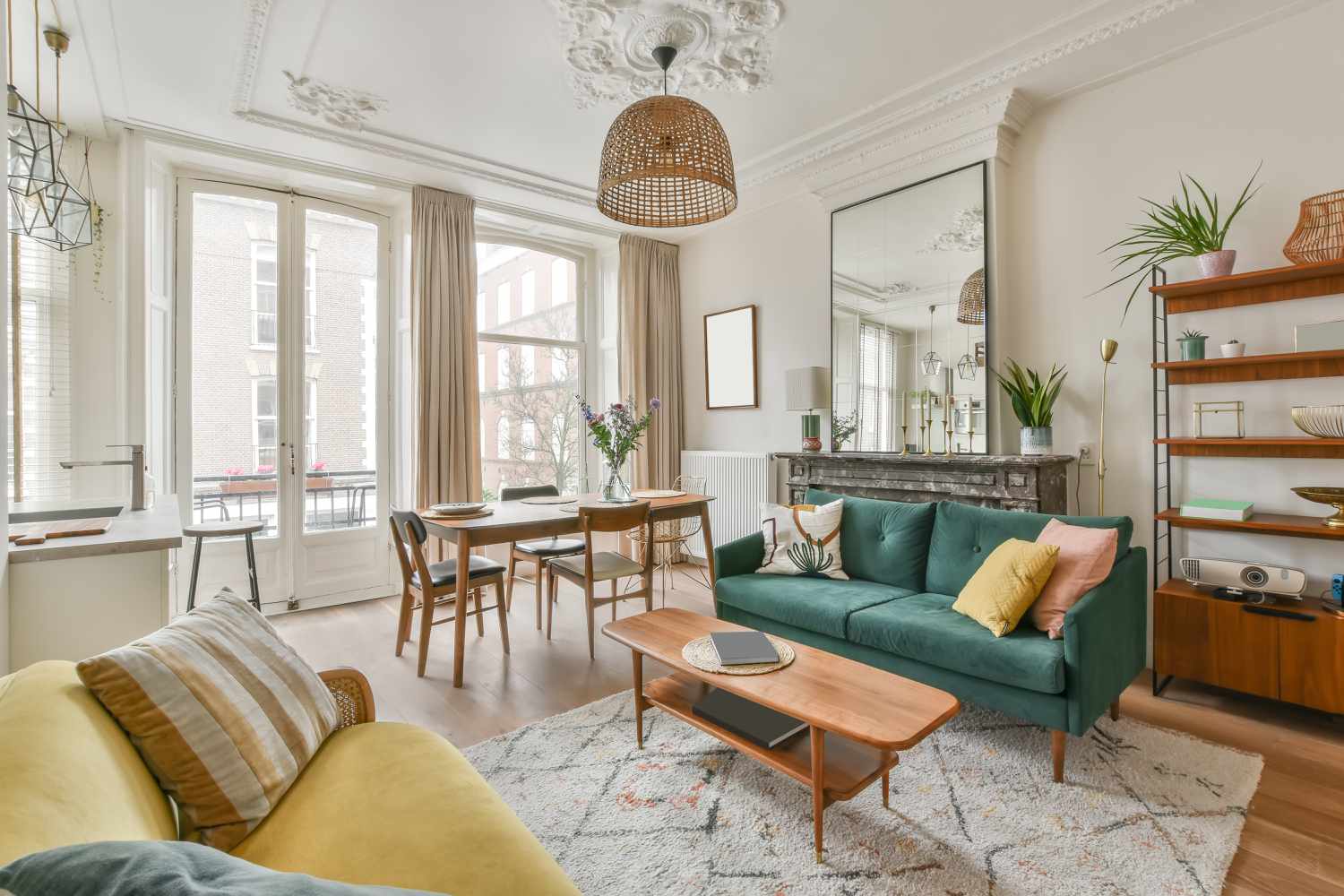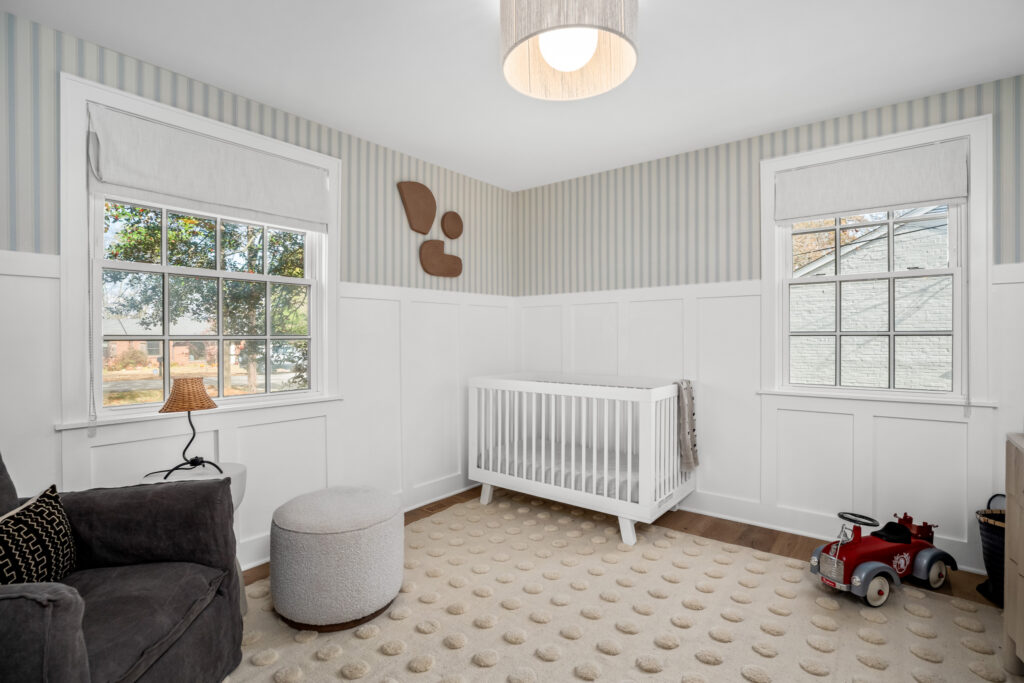
Living in a small space doesn’t mean you have to sacrifice comfort, functionality, or style. Whether it’s a tiny apartment, a compact bedroom, or a cozy living room, smart design choices can make any space feel more open and inviting. With the right colors, lighting, furniture, and decor strategies, you can create the illusion of a larger, airier room without knocking down a single wall. Here’s a detailed guide on how to make small spaces look bigger.
1. Use Light Colors to Open Up the Room

One of the easiest ways to make a small space feel bigger is through color. Light and neutral shades—such as white, beige, soft gray, or pale blue—reflect light better, making a room appear brighter and more spacious. Darker tones, on the other hand, absorb light and make spaces feel smaller.
To add depth and dimension, consider using different shades of the same color. For example, pair an off-white wall with cream-colored furniture and pale wooden accents. If you love bold colors, you can still incorporate them—just use them sparingly in pillows, rugs, or artwork to create visual interest without overwhelming the space.
2. Maximize Natural and Artificial Light
Lighting plays a crucial role in how large or small a room feels. The more light you allow into your space, the more open it will appear. Avoid heavy, dark curtains that block sunlight; instead, opt for sheer or light-colored drapes that let natural light filter through.
If your room doesn’t have large windows, enhance brightness with artificial lighting. Use multiple light sources—such as ceiling fixtures, wall sconces, floor lamps, and table lamps—to eliminate shadows and create a balanced glow. Mirrors placed strategically across from windows can also amplify natural light, making the room feel instantly larger and more radiant.
3. Choose Multi-Functional and Scaled Furniture

In small spaces, every piece of furniture counts. Choose furniture that serves multiple purposes, such as a sofa bed, a storage ottoman, or a dining table that folds away when not in use. These space-saving pieces reduce clutter and allow more freedom of movement.
Also, pay attention to furniture scale. Oversized pieces can dominate a small room and make it feel cramped. Instead, choose sleek, streamlined furniture with legs that lift it off the floor—this creates a sense of openness by allowing light to pass underneath. Glass tables and acrylic chairs are great choices because they take up less visual space while still being functional.
4. Declutter and Stay Organized
Nothing makes a small space feel smaller than clutter. A clean, organized room always looks bigger and more inviting. Start by getting rid of unnecessary items and keeping only what you truly need. Use smart storage solutions—like wall shelves, under-bed drawers, or vertical cabinets—to maximize every inch of space.
Try to keep surfaces like countertops, tables, and dressers clear. Store smaller items in baskets, boxes, or hidden compartments. Minimalism is your best friend when decorating small spaces—each piece should have a purpose or bring you joy.
5. Use Mirrors and Reflective Surfaces
Mirrors are one of the oldest tricks in interior design for expanding small spaces. A large mirror can make a tiny room feel twice its actual size by reflecting light and creating the illusion of depth.
Place mirrors opposite windows to reflect natural light, or hang them near lamps to enhance artificial lighting. You can also incorporate mirrored furniture or metallic accents—like chrome, glass, or glossy finishes—to add brightness and visual expansion to the space.
6. Create Vertical Interest

When you can’t expand outward, go upward. Using vertical space draws the eye toward the ceiling, making a room appear taller and more spacious. Tall bookshelves, vertical artwork, and long curtains that hang from ceiling to floor can visually elongate your walls.
You can also use vertical stripes on wallpaper or paint to create the illusion of height. Floating shelves and wall-mounted lighting are additional ways to utilize vertical space without cluttering the floor area.
7. Keep the Floor Clear and Consistent
Visible floor space helps a room feel open. Choose furniture with exposed legs, avoid heavy rugs that break up the visual flow, and keep pathways clear. Using the same flooring throughout adjoining rooms also creates a seamless, expansive look.
If you love area rugs, choose light-colored ones that complement the wall and furniture tones. Make sure they’re proportionate to the space—too small or too large can throw off the room’s balance.
8. Use Smart Decor Techniques
Finally, decor can dramatically affect how spacious a room feels. Hang artwork at eye level or slightly higher to draw attention upward. Use a few large statement pieces rather than many small ones to reduce visual clutter.
Glass doors, transparent partitions, or open shelving can maintain flow between spaces while still defining areas. Plants can also make a room feel fresher and more open, especially when placed in corners or hung from ceilings.
Final Thoughts
Making a small space look bigger is all about balance, light, and thoughtful design. With the right color palette, smart furniture choices, and a clutter-free approach, even the tiniest room can feel open, stylish, and functional. The key is to create harmony—everything should have its place, purpose, and proportion. When done right, small spaces don’t just look bigger—they feel better to live in.
